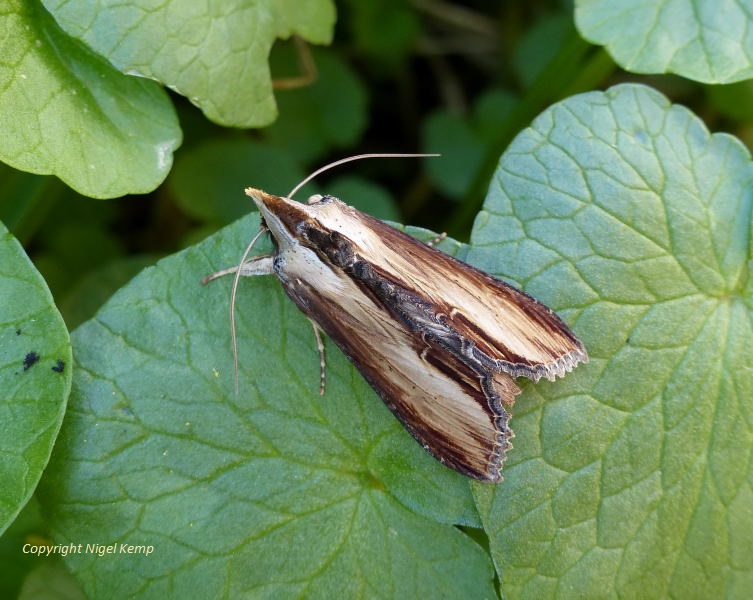Over the last couple of days I have been watching the antics of the Green Hairstreak (Callophrys rubi) along the sunny edge of a Wealden wood. It is the earliest of the British Hairstreaks to be seen on the wing (the others being summer emergents) and it is probably the easiest of them all to approach and observe at low level. I have found several mating pairs over the years but yesterday I was able to observe the brief courtship and coupling as it happened.
Green Hairstreak (Callophrys rubi) (mating)
(the female is the fresher and slightly darker looking individual)
Green Hairstreak (C.rubi) (males)
(this male is showing signs of a bird strike, probably by a warbler that has tried to catch it in flight)
(this male is showing how this species typically holds its wings at a perpendicular angle to the sun's rays)
The Grey Birch moth (Aethalura punctulata) is not a species that comes to my garden light-trap. Established birch woodland is its preferred habitat and I often see it flying during the day when I'm working in the woods.
Grey Birch (Aethalura punctulata)
Yesterday, I came across this young Toad (Bufo bufo) on the woodland floor and looking for shelter from the sun. It was just 2.5 cms. long and was probably a tadpole from spring 2017. Toads do not reach maturity until they are 4 or 5 years old and can live for 30 or 40 years.
Common Toad (Bufo bufo) (juvenile)
Green-veined White (Pieris napi) (male)
Common Frog (Rana temporaria)















